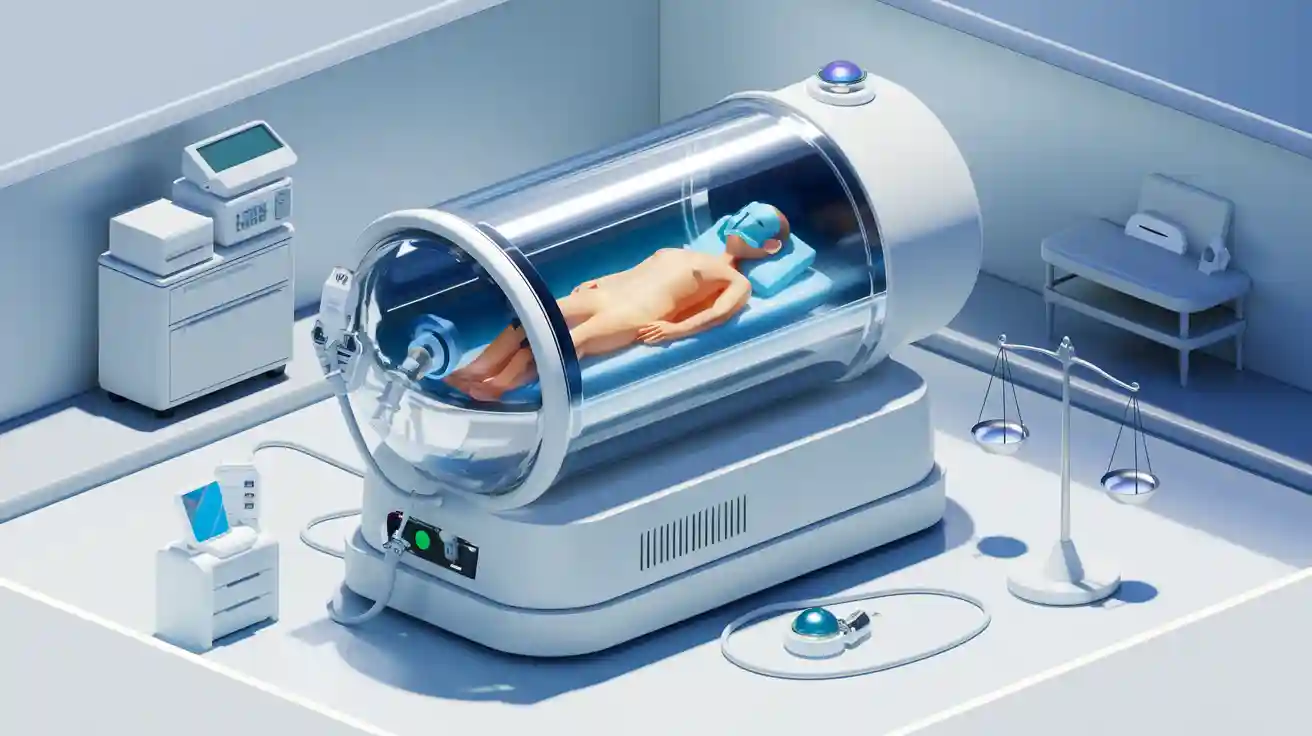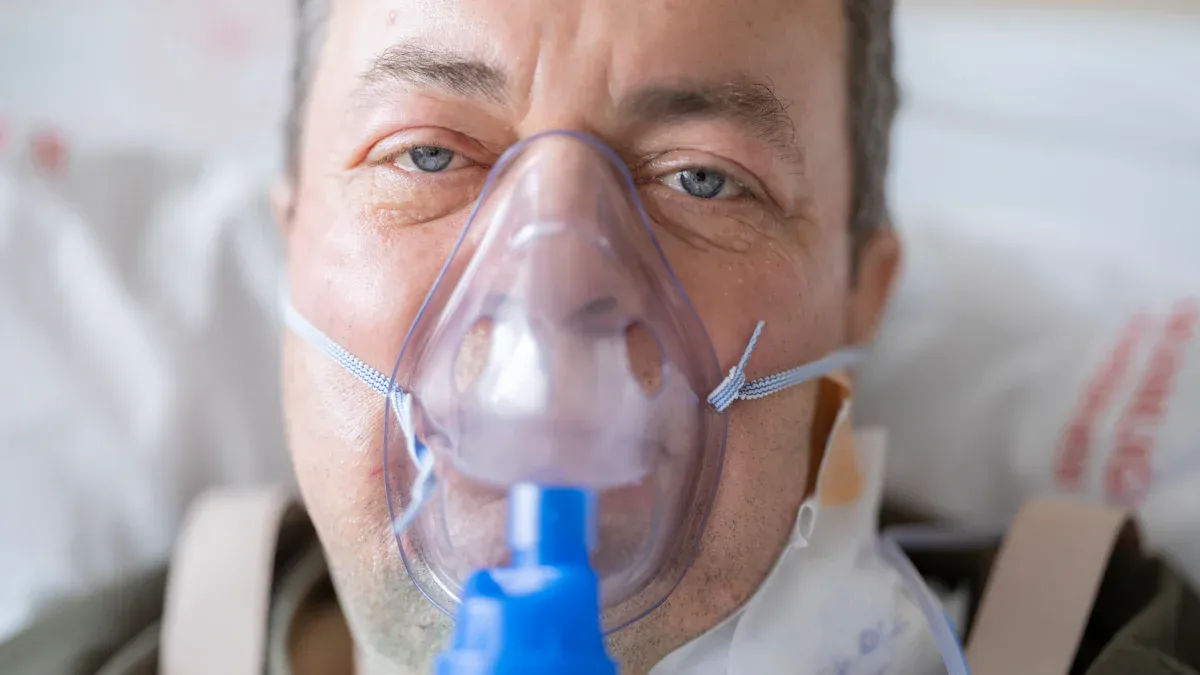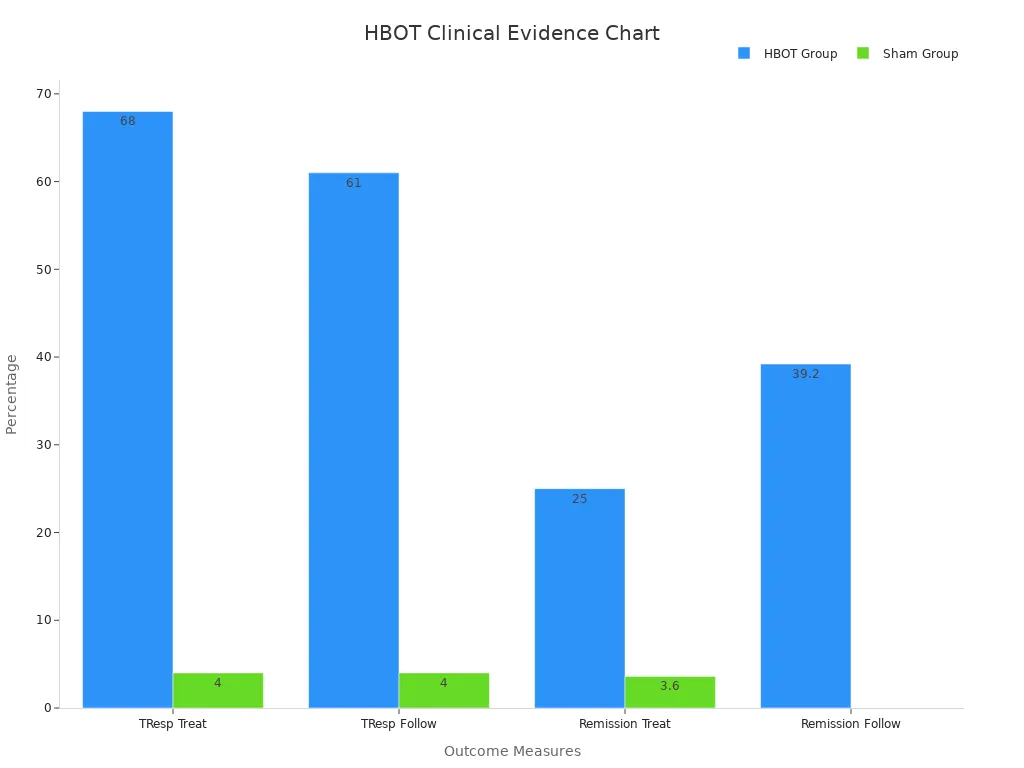Understanding the Risks and Rewards of Hyperbaric Oxygen Therapy

Hyperbaric oxygen therapy (HBOT) utilizes a Hyperbaric Oxygen Chamber to deliver pure oxygen in a pressurized environment. This innovative treatment accelerates the body's healing process by enhancing blood flow and supplying more oxygen to tissues, which significantly aids in recovery. For instance, research indicates that HBOT increases blood flow to the heart and improves the functionality of tiny blood vessels within it. Additionally, HBOT promotes the growth of new blood vessels, as evidenced by skin samples. Middle-aged athletes have demonstrated improved physical performance with HBOT, experiencing Natural Red Beet Root Powder due to enhanced cellular energy. Understanding how the Hyperbaric Oxygen Chamber works is crucial, whether for treating a specific condition or for recovery purposes.
Key Takeaways
-
Hyperbaric oxygen therapy (HBOT) helps healing by giving pure oxygen in a pressurized room. It improves blood flow and brings more oxygen to the body.
-
HBOT works well for problems like carbon monoxide poisoning, scuba diving sickness, and slow-healing wounds. It helps people recover faster.
-
Common side effects of HBOT are ear pain and feeling nervous. Serious problems are rare, but always talk to a doctor before starting.
-
HBOT can be expensive and costs depend on the condition. Check your insurance and plan ahead to avoid surprise bills.
-
Studies show HBOT might help the brain work better. It gives hope to people with brain injuries or other tough health problems.
What Is a Hyperbaric Oxygen Chamber?

Image Source: pexels
How It Works
A hyperbaric oxygen chamber is a special medical tool. It gives oxygen at higher pressures than normal air. This helps your body absorb more oxygen, which is key for healing. The chamber works based on these ideas:
| Principle Type | Description |
|---|---|
| Pressure Principle | Raises oxygen levels in blood by increasing pressure. |
| Contraction Principle | Improves blood flow by helping blood vessels expand and shrink. |
| Antimicrobial Principle | Stops harmful bacteria from growing because of high oxygen levels. |
| Detoxification Principle | Speeds up the removal of harmful gases, making you healthier. |
These chambers usually work at pressures between 1 and 2 atm. There are monoplace chambers, where you breathe oxygen directly, and multiplace chambers, where masks are used. Hospitals often use hard-shell chambers made of strong materials like aluminum. For home use, soft-shell chambers made of TPU are common.
HBOT fills your blood with oxygen, helping it reach areas that need it most. This is helpful for parts of the body with poor blood flow. It also helps grow new blood vessels, which bring oxygen and nutrients to damaged areas.
Types of Conditions Treated
Hyperbaric oxygen therapy (HBOT) helps with many health problems. It works well for issues needing better oxygen delivery. Common conditions include:
-
Carbon Monoxide Poisoning: HBOT removes carbon monoxide from blood, restoring oxygen levels.
-
Decompression Sickness: High pressure shrinks nitrogen bubbles in blood, easing symptoms.
-
Chronic Wounds (Diabetic Foot): HBOT helps wounds heal by improving oxygen levels in tissues.
-
Crush Injuries: It improves blood flow and lowers swelling, aiding recovery.
HBOT might help with burn wounds, but more research is needed. Only FDA-approved chambers should be used for safe treatment.
Benefits of Hyperbaric Oxygen Therapy

Image Source: unsplash
Faster Wound Healing
Hyperbaric oxygen therapy (HBOT) helps wounds heal faster. It sends oxygen straight to damaged areas. This helps new blood vessels grow, improving blood flow and bringing nutrients to the wound. For long-lasting wounds like diabetic foot ulcers, HBOT shows quick results. However, its long-term success is still being studied. Scientists are comparing it to regular treatments to learn more.
HBOT also lowers swelling and helps fix damaged tissues. This makes it useful for injuries that heal slowly. While it might help with burn wounds, more research is needed to confirm its full benefits.
Help for Decompression Sickness
Decompression sickness happens when divers rise too quickly. This causes nitrogen bubbles in the blood. HBOT treats this by using high-pressure oxygen to shrink the bubbles. This restores normal blood flow.
One case involved a 64-year-old diver with serious symptoms. He had trouble speaking and moving. After four HBOT sessions, he fully recovered. This shows how HBOT can fix both body and brain problems caused by decompression sickness.
Brain and New Uses
HBOT is being studied for brain-related problems. Research shows it helps the brain heal by growing new cells and reducing swelling. This improves thinking and helps with brain injuries and stress disorders.
New studies suggest HBOT changes how genes work at a tiny level. This could help treat complex brain problems. As scientists learn more, HBOT offers hope for people needing advanced treatments.

Risks of Hyperbaric Oxygen Therapy
Hyperbaric oxygen therapy (HBOT) has benefits, but it also has risks. Knowing these risks helps you decide if HBOT is right for you.
Common Side Effects
Most HBOT side effects are mild and go away quickly. During treatment, your ears might feel uncomfortable because of pressure changes. This is like what happens when flying on a plane. About 29% of people experience this, called middle ear barotrauma. Some feel anxious or scared in the chamber, which happens in 12.5% of cases. Around 8% of people remember forgotten memories, which can feel strange.
| Side Effect | Percentage (%) |
|---|---|
| Mild middle ear barotrauma | 29 |
| Emotional distress | 12.5 |
| Remembering forgotten memories | 8 |
These effects usually stop after the session ends. If they don’t, talk to your doctor.
Rare but Serious Complications
Serious problems with HBOT are rare but can happen. Oxygen toxicity can cause seizures, though this is very uncommon. Studies show seizures happen in less than 0.03% of treatments. For example, one study found only one seizure in 634 sessions. Other rare issues include trouble handling pressure, anxiety, or stomach pain.
-
Seizures: Happen in 0.25 to 6 out of 10,000 treatments.
-
Pressure problems: Can cause pain or discomfort during treatment.
-
Anxiety and stomach pain: Rare but possible issues.
Talk to your doctor about your health history before starting HBOT. Some conditions might make these problems more likely.
Financial and Accessibility Challenges
HBOT can cost a lot, especially if insurance doesn’t cover it. The HBOT market is growing and could be worth $4.41 billion by 2024. Still, high costs make it hard for many people to afford. Some areas don’t have HBOT devices, and some doctors doubt its use for unapproved conditions.
-
High costs: A big problem for many patients.
-
Limited access: Hard to find in rural or remote areas.
-
Insurance problems: Coverage depends on your condition and location.
Before starting HBOT, think about the costs and check your insurance. This can help you avoid spending too much, especially if HBOT’s benefits for your condition are unclear.
Making a Smart Choice About HBOT
Talking to a Healthcare Provider
Before trying hyperbaric oxygen therapy (HBOT), talk to a doctor. This helps make sure the treatment fits your health needs. Doctors, nurse practitioners, and physician assistants can help. Their rules for supervision are different:
| Provider Type | Supervision Rules |
|---|---|
| Doctor | Must be on-site and ready to help during treatment. |
| Nurse Practitioner | Needs a written agreement with a doctor and general supervision. |
| Physician Assistant | Must show proof of supervision by a doctor and follow all rules. |
During your visit, share your health history and any concerns. This meeting sets clear goals and answers your questions.
Checking Evidence for Your Condition
It’s important to know if HBOT works for your condition. You can look at studies, reports, and research summaries. These show how HBOT helps with problems like swelling and cell damage.
For example, research shows HBOT helps brain-injured people think better. It also improves decision-making. The table below shows some findings:
| Study | Results | What It Means |
|---|---|---|
| Harch et al., 2007 | HBOT helps brain-injured people learn and remember better. | HBOT may help brain recovery. |
| Boussi-Gross et al., 2013 | HBOT improved thinking in people with mild brain injuries. | HBOT might fix thinking problems. |
| Hadanny et al., 2020 | HBOT boosts brain activity in key areas. | HBOT could improve decision-making. |
Looking at this research helps you decide if HBOT is right for you.
Thinking About Costs and Insurance
HBOT can cost a lot, so plan ahead. Prices depend on how many sessions you need and if insurance helps. For example, the cost for 40 treatments dropped by 15.6% from 2013 to 2022. Here’s a breakdown:
| Year | Cost for 40 Treatments | Doctor Cost | Facility Cost |
|---|---|---|---|
| 2013 | $27,561.74 | $5,993.16 | $21,568.58 |
| 2022 | $23,834.40 | $4,346.40 | $19,488.00 |
| Change | -15.6% | -37.8% | -10.7% |
Studies also show HBOT can save Medicare money, like 37% for diabetic foot ulcers. Before starting, check your insurance and compare costs to benefits.
Hyperbaric oxygen therapy (HBOT) has good benefits but also risks. Think carefully before choosing it. For example:
-
HBOT may help Parkinson's patients sleep better. Better sleep improves their daily life.
-
It can speed up healing and help with certain health problems.
But, you should think about side effects, costs, and availability. Talking to a doctor helps you decide wisely. Careful planning lets you enjoy the benefits and avoid the risks of HBOT.
FAQ
What happens during an HBOT session?
In an HBOT session, you sit or lie down inside a pressurized chamber. Your ears might feel pressure, like when flying on a plane. Breathing pure oxygen feels normal. Sessions usually last about 1 to 1.5 hours.
Is HBOT safe for kids?
Yes, HBOT is safe for kids if a doctor prescribes it. It is often used for problems like carbon monoxide poisoning or certain infections. Always talk to a pediatric doctor before starting treatment.
How many HBOT sessions do I need?
The number of sessions depends on your health problem. Short-term issues, like decompression sickness, need fewer sessions. Long-term problems, like diabetic wounds, may need 20–40 sessions. Your doctor will decide.
Can HBOT be used for general health?
Some people use HBOT for general health, but strong proof is missing. FDA-approved uses are for specific medical problems. Always ask your doctor before using HBOT for non-medical reasons.
Does insurance pay for HBOT?
Insurance often pays for HBOT if it’s for FDA-approved conditions. These include carbon monoxide poisoning or chronic wounds. Coverage depends on your insurance plan and location. Check with your provider to know what they cover.